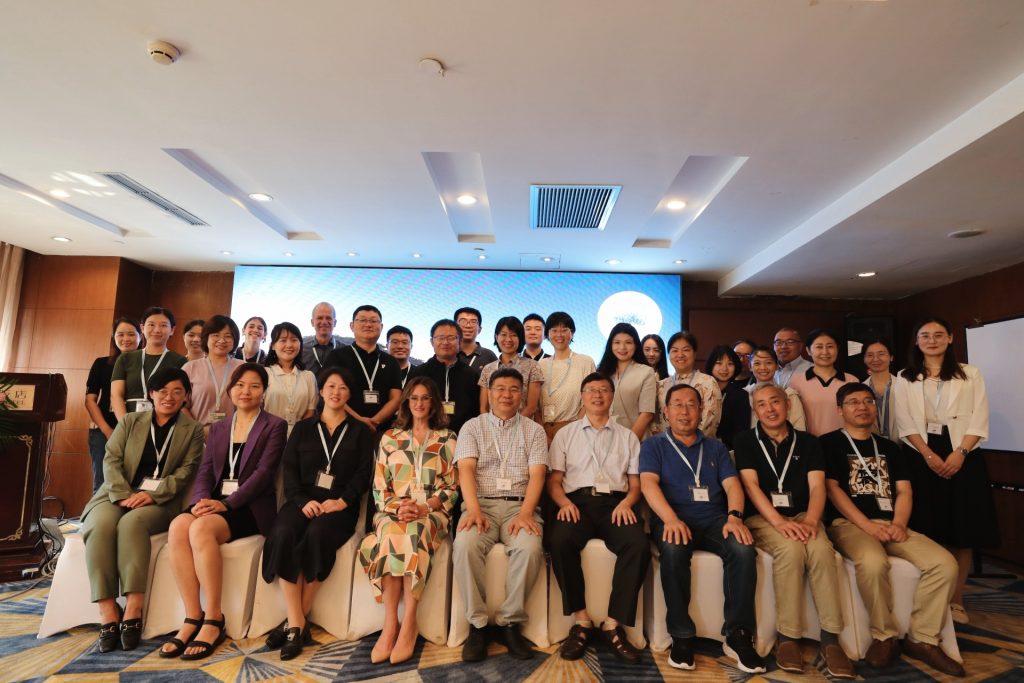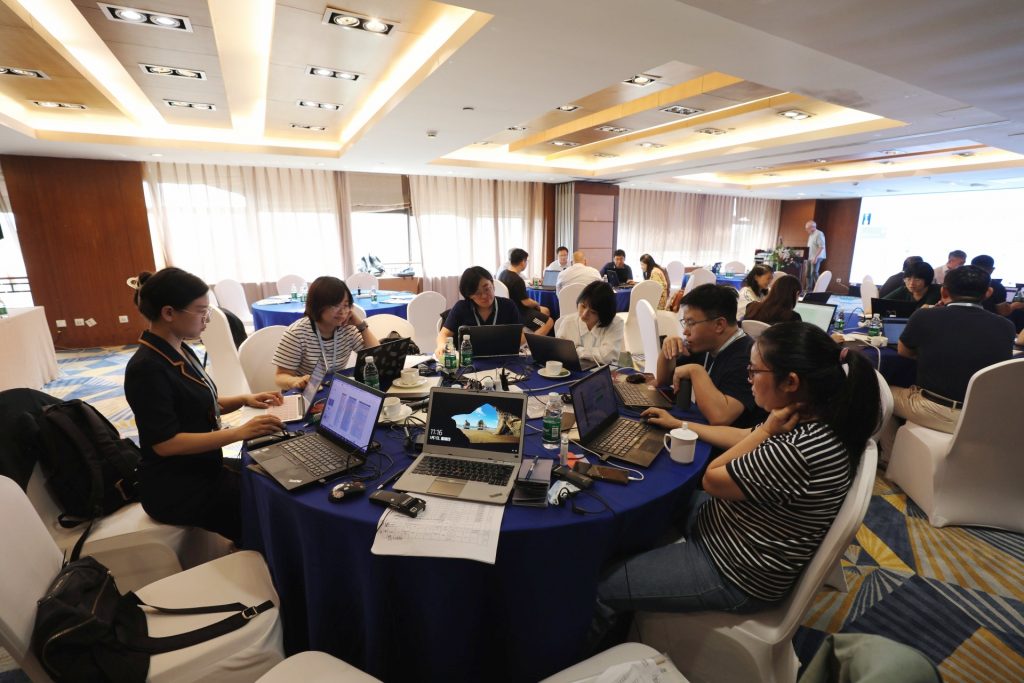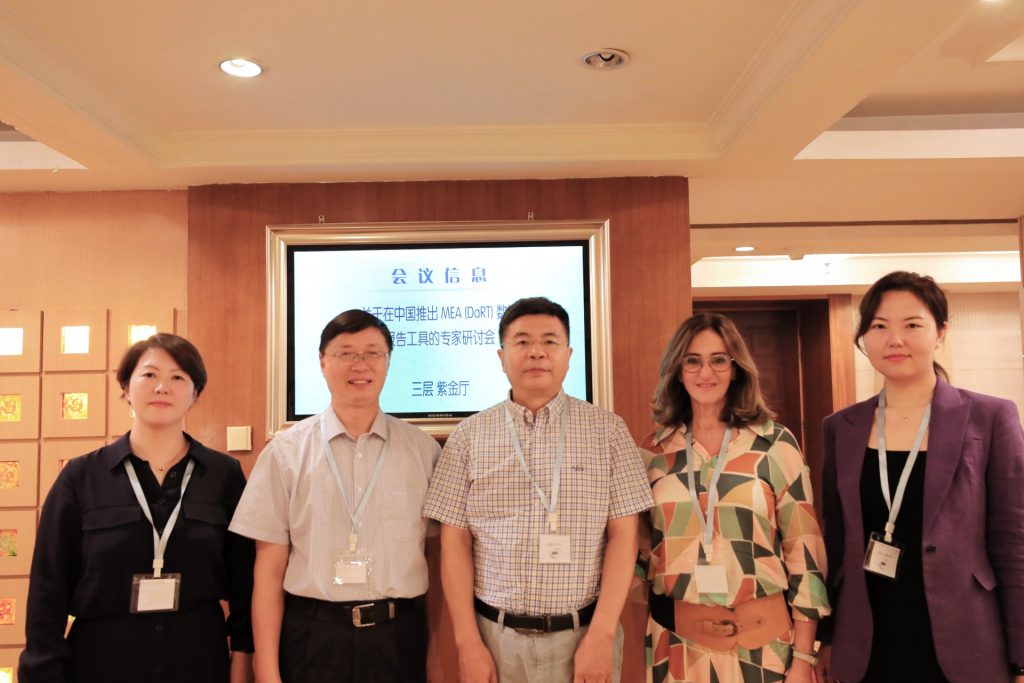News
China’s national biodiversity leads come together for first time to explore new reporting tool

Story | Nov 2023
In December 2022, countries pledged under the Kunming-Montreal Global Biodiversity Framework (GBF) and related package of decisions to put nature on a path to recovery by 2030. Countries are now working hard to develop and update their national targets and National Biodiversity Strategies and Action Plans (NBSAP) in line with the GBF, in recognition of the need for urgent action on the biodiversity and climate crises. With national reporting processes required by multiple biodiversity-related multilateral environmental agreements (MEAs), keeping track of progress on these targets and managing the resulting data is a substantial task.
To streamline the reporting process, promote synergies and lessen the burden on countries, the UN Environment Programme (UNEP) with support from the UN Environment Programme World Conservation and Monitoring Centre (UNEP-WCMC) has developed an online platform: the Data Reporting Tool for MEAs (DaRT).
In September 2023, a Beijing workshop organised by UNEP in collaboration with Nanjing Institute of Environmental Sciences (NIES) of the Ministry of Ecology and Environment (MEE) and UNEP-WCMC brought together for the first time China’s biodiversity-related MEA focal points to explore how relevant authorities can use DaRT. Over two days, the workshop facilitated the use and uptake of DaRT by national data experts and stakeholders from relevant research institutions and administrations.

Twenty-eight national experts participated in the workshop, with attendees including national focal points of biodiversity-related conventions and MEAs for the Convention on Biological Diversity (CBD), United Nations Convention to Combat Desertification, and UNESCO World Heritage Convention, as well as expert representatives from supporting departments closely involved in the preparation of national reports to biodiversity-related conventions. These departments included the National Center for Climate Change Strategy and International Cooperation of the MEE, the National Climate Center, the Chinese Academy of Forestry, Beijing Forestry University, Institute of Zoology Chinese Academy of Sciences, Third Institute of Oceanography of the Ministry of Natural Resources, Renmin University of China, and Chinese Academy of Agricultural Sciences.

DaRT is an online database developed by UNEP for use by Parties to MEAs, with UNEP-WCMC leading the maintenance of a library of guidance and global data for the reporting and implementation of biodiversity-related conventions. Funded by Switzerland, Sweden and the EU, it provides private and secure national working spaces for Parties, allowing them to organise, share and maintain information, data and knowledge across conventions and according to national, regional and global environmental targets.
For example, a biodiversity focal point at a regional agriculture ministry can use DaRT to see how agriculture policy links with the country’s commitments under the Convention on Biological Diversity (CBD). They choose keywords to search the database and use the results to compile national reports. This might highlight how adopting more efficient irrigation methods and thereby extracting less water from the environment might contribute to the Ramsar Convention (sustainable use of wetlands), the CBD (ecosystem restoration and minimising of climate change), and the Sustainable Development Goals (availability of water, sustainable management of natural resources, reduce degradation of ecosystems). In this way, one action can be reported to several MEAs.
DaRT can also be used to create an analysis showing any overlapping initiatives with other provinces or states and the central government.
During the Beijing workshop, participants took part in group exercises and seminars introducing the tool, understanding how it works, how it helps to fill in gaps for national reporting to MEAs, and highlighting how it can be used to update NBSAPs and national reporting in line with the GBF. Participants were able to practice using China’s national space within DaRT and provided feedback for further development of the tool.
Their comments included recommendations that the policy mechanism required to encourage the application and further development of DaRT from convention to national levels be addressed before DaRT is implemented at a national level.
Mr Liu Ning, representing China’s Ministry of Ecology and Environment and COP 15 Presidency, expressed positive feedback about the tool at the bilateral meetings organised during the workshop. He stated that this was the first time all of China’s national biodiversity-related MEA focal points had been brought together and applauded the effort led by UNEP to provide a platform promoting synergies between MEAs.
MEAs address the challenges faced by ecosystems from climate change, biodiversity loss, desertification and species extinction, but ecosystems are complex and no single convention can comprehensively contend with all of these problems. The DaRT workshop was an important step to solve the problem of lack of synergies between conventions. Participants learned about the synergies between the implementation of other multilateral environmental agreements and the Global Biodiversity Framework, and deepened their understanding of NBSAPs and knowledge management.
Liu Ning, Deputy Director General of the Department of Nature and Ecology Conservation within the Ministry of Ecology and Environment, and Deputy Representative to the COP15 President
I am grateful to the Chinese government for their support in the promotion of DaRT, and to the national representatives and experts who attended the seminar for their contributions. I hope to further strengthen synergies between biodiversity-related conventions through the DaRT project. This will lead to a collaborative agenda for the implementation of the Kunming-Montreal Global Biodiversity Framework and enhance the protection of biodiversity globally.
Norbert Bärlocher, Head of Rio Conventions (Climate, Biodiversity) in Switzerland’s Federal Office for the Environment

After the workshop, Deputy Representative to the COP15 President Liu Ning, together with representatives from NIES, UNEP and UNEP-WCMC discussed next steps for China’s pioneering of DaRT and future engagement with the tool.
During the meeting of the Subsidiary Body for Scientific and Technological Advice (SBSTTA-25) in Nairobi last month, Chinese representatives attended two side events with a focus on DaRT. At one, DaRT was presented as part of a session led by UNEP-WCMC on tools for national biodiversity monitoring, alongside the Target Tracker platform being developed by UNEP-WCMC and Secretariat of the Convention on Biological Diversity’s Online Reporting Tool. The event highlighted the importance of linking these tools for monitoring and implementing the GBF – with DaRT emphasised as way to achieve such synergies. The second side event was led by UNEP and focused on preparations for the upcoming Bern III Conference on Cooperation among the Biodiversity-related Conventions for the implementation of the GBF, in January 2024. During the event, Mr Liu stressed the value of working collaboratively on MEAs and the need to raise the profile of synergies.
Delegates from 15 countries took the opportunity to visit the DaRT helpdesk during SBSTTA-25 to get a walkthrough of the tool and learn about its functionalities.
To date, over 150 countries have attended a DaRT webinar or workshop. Fully functional DaRT working spaces have been established for more than 110 countries, and 30 countries have participated in dedicated national or regional training workshops to operationalise the tool.
UNEP has an institutional mandate to promote coherent and synergistic implementation of the multilateral environmental agreements and support the effective implementation of the Kunming-Montreal Global Biodiversity Framework, adopted at CBD COP15 under China’s leadership and Presidency of the COP. DaRT is a practical and voluntary tool, bringing all national MEA focal points together, facilitating cooperation and information exchange among data users and providers at the national level. We hope that the uptake of DaRT demonstrates its efficiency for synergistic reporting across the relevant conventions, as well as being used for the alignment of China’s NBSAP with the GBF.
Diane Klaimi, Lead of UNEP DaRT team
DaRT is very important for the implementation of the GBF and has been recognised as one of the key tools by CBD COP15 in several of the decisions supporting the GBF implementation on planning, monitoring, reporting and cooperation among the organisations and conventions for the effective implementation and monitoring of the GBF. The participation of biodiversity-related focal points from across China in the recent workshop is an important step towards the wider adoption of a tool that will help ensure countries deliver the results for biodiversity needed by 2030. UNEP-WCMC looks forward to continuing its work in collaboration with colleagues across UNEP, supporting the development of DaRT and introducing it to more countries in the future.
Han Meng, China Officer at UNEP-WCMC
To learn more about how DaRT supports countries with national reporting and the implementation of multiple MEAs at once, go to DaRT's website, or contact the DaRT team.
Main image: AdobeStock_72625777
Have a query?
Contact us
communications@unep-wcmc.org
